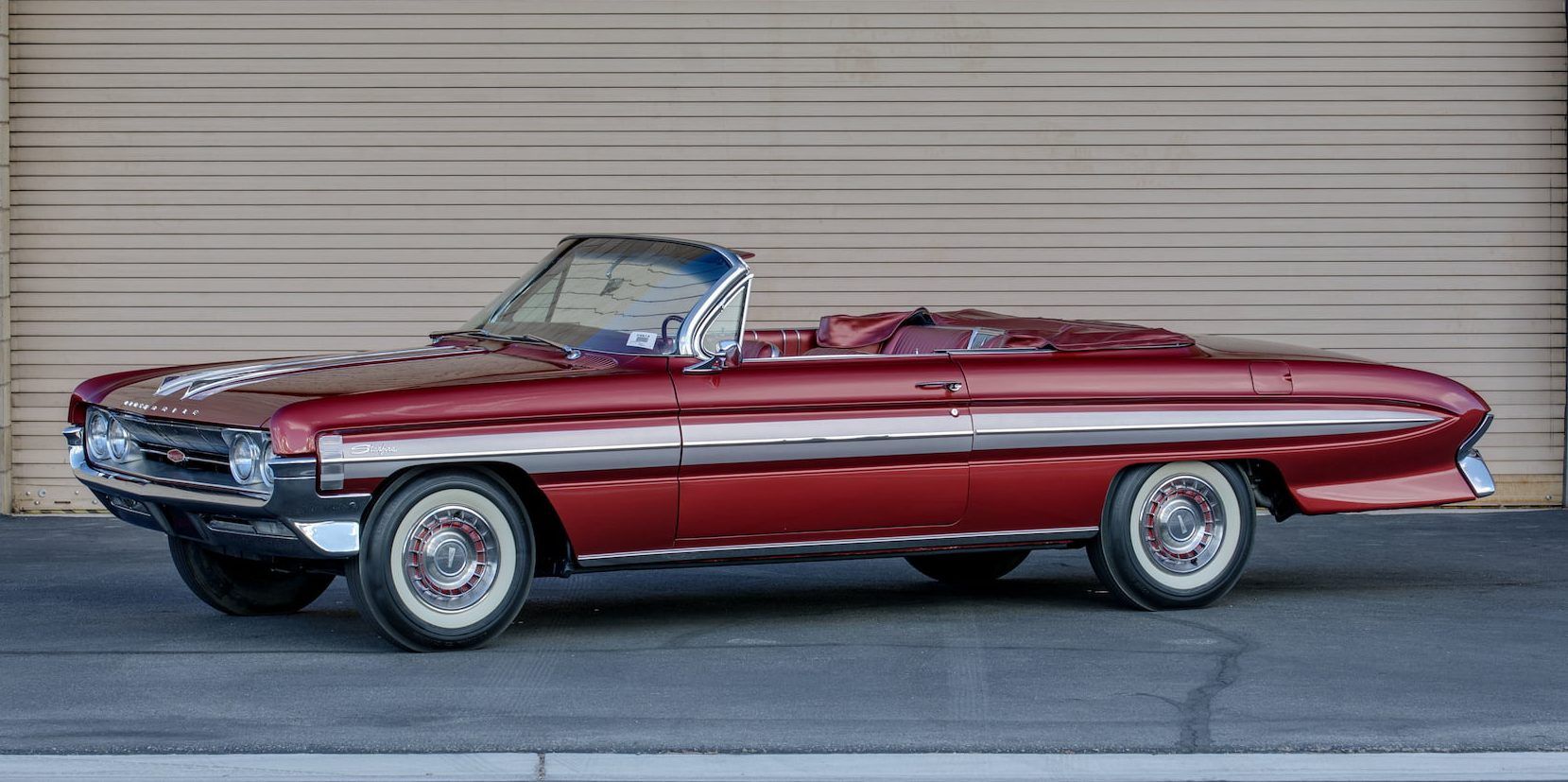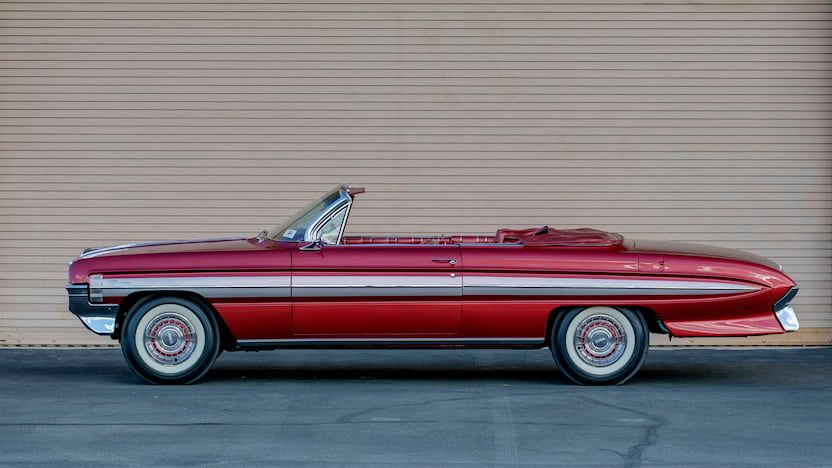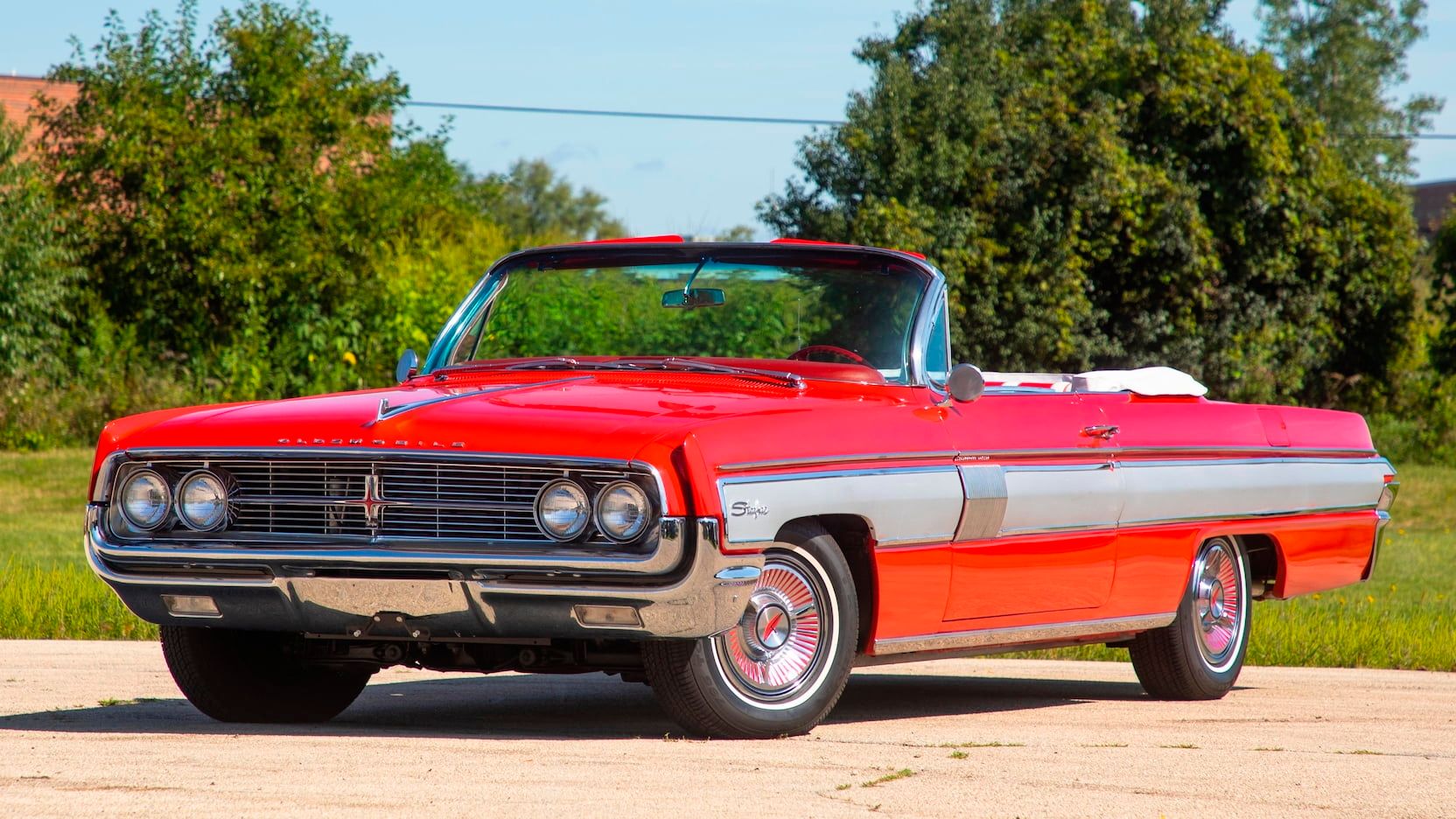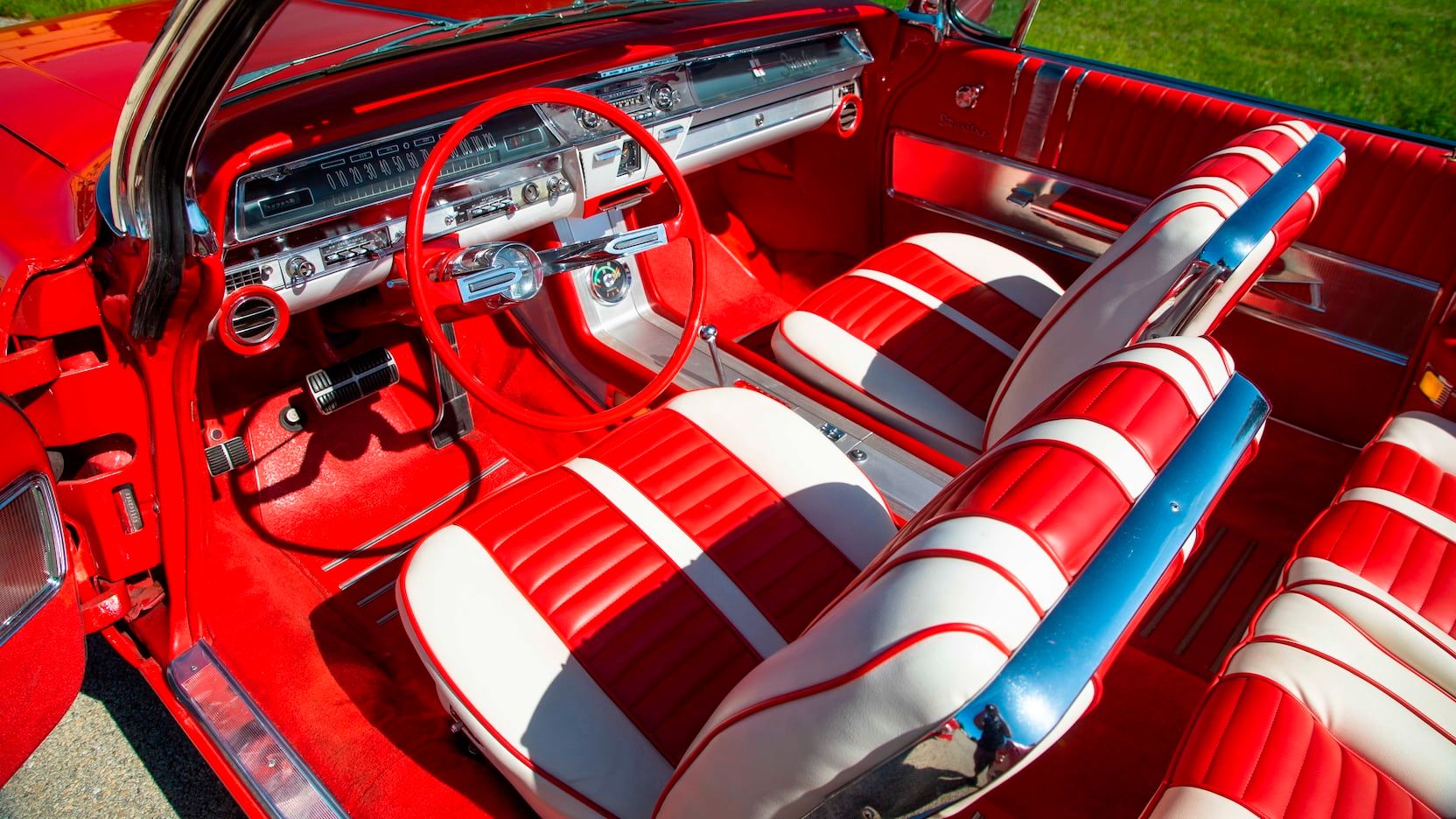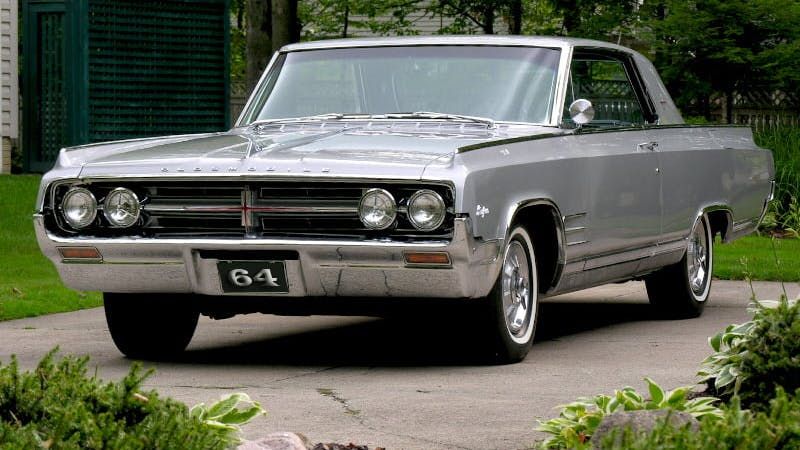When it comes to American classics, muscle cars tend to be the most stand-out type with their badass looks and power. Mostly forgotten today, another class of American cars once stood for the most glamorous, upscale, and powerful beasts the industry produced - the personal luxury car. Kicked off by the Ford Thunderbird in 1955, personal luxury cars rose to popularity as incredible blends of exterior styling, V8 muscle, and jaw-dropping glamor and luxury on the inside.
Another often forgotten part of American car history, Oldsmobile once was GM's supremely powerful and innovative brand, seeing an illustrious history that included creating the first true muscle car, the first turbocharged production car, the first automatic transmission, as well as the second FWD American production car. When it came to personal luxury cars though, Oldsmobile dropped a bombshell on the segment with this beast, the Starfire.
Originally a top-end trim level of the 98, the Starfire became its own model in 1961, being one of the most expensive cars in Oldsmobile's lineup, as well as packing massive V8 power and chrome-clad luxury. Widely forgotten today, the Starfire was replaced by the Toronado, then saw a second-generation that butchered its name by turning it into a re-badged Chevy Monza, but the original that ran from ‘61 to ‘66 is a spectacular classic that deserves more attention.
Jet Age Design, Rocket Power
Before being a trim level on the 98, the Starfire name already had plenty of glamor to it, being affixed to an incredible concept displayed alongside the first Corvette at GM’s 1953 Motorama show. Being the Jet Age, this name was a direct reference to one of the most advanced fighter jets of the time, the P-80 derived Lockheed F-94 Starfire. Turning that name into a designation for fully optioned, top-end 98 models in 1954, the Starfire 98 lasted until ‘57 and was a big luxurious beast. For ‘61, this luxury-oriented trim became its own model, riding on a tougher version of the Super 88’s chassis, but adapting styling from the high-end 98 as a full-size personal luxury car.
Among those cues carried over were several fighter jet inspiration, including the awesome rear fins, and side inlay that mimicked a jet fuselage. As well, ‘61 Starfires only came as a convertible. Not just flashy, a personal luxury car had to back its glamor up with power too, and that was provided in spades for the Starfire. Powered by a 394 cu-in Rocket V8, a signature for Oldsmobile, the first Starfire laid down a whopping muscle-car like 330 hp and 440 lb-ft of torque through a 3-speed TurboHydramatic auto, and would only get stronger through its 1st gen. Selling 7,604 units in ‘61, the Starfire would never be a smash hit, and the Thunderbird it competed with sold 10 times that figure in ‘61. As well, with competition fierce for full-size personal luxury cars in the early ‘60s, competitors from within GM like the Buick Wildcat and Pontiac Bonneville gave it a tough time in the market.
Yearly Updates, Wavering Sales
Despite low sales, the Starfire would remain for several more years, changing with each passing one. Come 1962, the Starfire received a new, more aggressive exterior design and slight interior changes, as well as a bump to 345 hp, and the introduction of a hardtop model. With the hardtop instantly vitalizing sales, the Starfire coupe sold around 35,000 units, while the convertible hit a similar mark to ‘61 with around 7,000 units sold that year. Refreshed again in 1963, the Starfire once more got some styling changes, evolving into a boxier, more aggressive muscular design, but slipped in sales to just around 26,000 units.
Doing the same yet again in 1964, the Starfire retained the overall body style of ‘63 but did away with the aluminum trim running down the side which had been a signature of the Starfire from ‘61 to ‘63. 1964 also saw the Starfire elongated by 3 inches, as well as the lower-priced Jetfire introduced, sharing the same body and layout, partially to blame for a drop in sales to just over 16,000 total. For '65, the writing was on the wall for the Starfire as intermediate muscle took over the spotlight, and the Starfire saw a new, less sleek body design introduced. Body aside though, the greatest change for ‘65 was the engine and transmission, now offering a ground-shaking 425 cu-in Rocket V8 with 375 hp and 470 lb-ft torque - easily on par with the greatest muscle of the time, and also included a 4-speed manual for the first time, shifting the Starfire from glamorous luxury car to a more muscle focused machine.
Selling around 15,000 units in ‘65, '66 saw the new Toronado debut as Oldsmobile’s premiere personal luxury car, and the Starfire was downgraded with less luxury coming standard inside, marking the end of the line for the glamorous nameplate. Technically sold in ‘67 as well, the Starfire became the Delta 88 Custom, retaining the ‘66 design but without the Starfire nameplate attached.
Old-School Luxury At Its Finest
Regardless of its brief model life and downfall, the Starfire stood out as an incredible luxury car. Being Oldsmobile’s most expensive car for its first few years, the Starfire reflected that inside. Decked out with plenty of chrome, vivid colors, and carpeting, any year of the 1st gen Starfire is a remarkable seat of luxury, with standard features that were dream-worthy for the early ‘60s. Included in that, you got leather bucket seats, power drum brakes, power steering, a tachometer, and an overall layout that was just sumptuous, as well as options like power windows that were reserved for only the highest-end cars.
Keeping the layout mostly the same until 1965, the Starfire’s interior is filled with incredible details, from the chrome door sills to the beautifully simple dashboard. Sadly, with the Starfire sidelined in ‘66 for the new Toronado, bits like power steering and brakes became options, and a lot of the chrome details went away. The biggest offense to the Starfire name though came in 1975, now standing for a re-badged Chevy Monza, it sold until 1980 as a cheap and un-luxurious heir to the name.
High-End When New, Affordable Classic Today
Sold new in 1961, the Starfire took its place as Oldsmobile’s most expensive car with its base price of $4,600 ($40,700 today), making it more expensive than, but still competitive with the ‘61 Thunderbird’s base price of $4,170 ($36,940 today) - of course, plenty of options could raise the price tag quite higher. By ‘64, the Starfire was sold with a more affordable base price of $4,138 ($35,356 today), and by ‘66 it got even cheaper, going on sale with a base price of $3,564 (just under $30,000 today).
Today, the Starfire’s relative lack of success, brief model lifespan, and revival as a cheap sports car have done prices no favors, and compared to many of its ‘60s competitors can be found for rather cheap. 1961 models are by far the most desirable with their one-year body style, selling for upwards of $45,000 in good shape, and as much as $70,000 in low-mileage near perfect condition. Good ‘62 models sell for between $20,000 to $40,000 depending on condition and mileage, and ‘63 examples go for around the same as well. 1964 gets cheaper at around $15,000 to $30,000 for a good one, and ‘65-66 remains mostly the same price-wise as '64 despite the downgrade in luxury, this is perhaps thanks to the bigger engine making it more of a muscle car.
Sources: Hagerty, Hemmings

